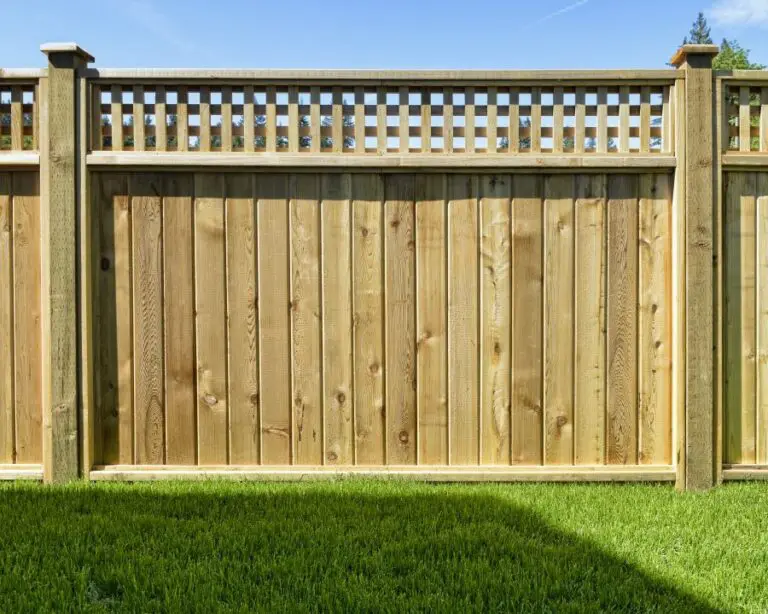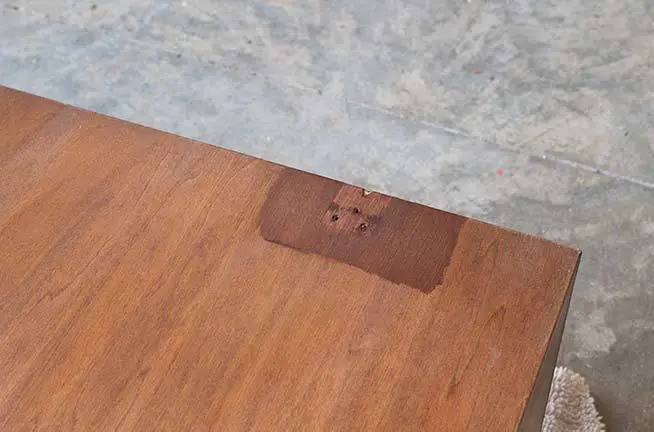How to Protect a Wood Fence
To protect a wood fence, you will need to do two things: stain it and seal it. Staining the fence will help protect it from the sun and weathering, while sealing it will help prevent rot and insect damage. You can do both of these things yourself, or you can hire a professional to do them for you.
- Inspect your wood fence regularly for signs of damage or wear and tear
- If you notice any damage, repair it immediately to prevent further deterioration
- Apply a fresh coat of paint or stain every few years to keep the wood protected from the elements
- Regularly clean your fence with a mild soap and water solution to remove dirt and grime build-up
- Trim back any overhanging branches from trees to prevent them from rubbing against and damaging the fence boards
How to Waterseal Wood Fence – Water Sealing Outdoor Lumber
Is It Better to Stain Or Seal a Fence?
If you have a fence made of natural wood, you may be wondering if it’s better to stain or seal it. The answer depends on a few factors, including your personal preferences and the type of wood your fence is made from. Here’s a look at the pros and cons of staining and sealing a wooden fence:
Staining Pros:
1. Enhances the natural beauty of wood – A good stain can highlight the grain pattern and bring out the natural color of the wood. This can give your fence a beautiful, rich appearance.
2. Protects against UV damage – Stains contain pigments that block out ultraviolet (UV) rays from the sun. This helps to prevent fading and other types of sun damage.
3. Makes repairs easier – If you have to make any repairs to your fence, it will be much easier to match the stain than it would be to match paint or sealant colors.
4. Doesn’t require as much maintenance – Once your fence has been stained, it won’t need to be refinished as often as a painted or sealed fence would need to be. Depending on the quality of the product you use and how well you maintain your fence, one stain job could last for several years before it needs to be redone.
5 Can provide waterproofing properties – Some stains are specially formulated with water repellents that can help protect your fence against water damage caused by rain, snow, and ice melting agents such as salt .
Cons: 1. Requires more preparation work – In order for stain to penetrate into the wood and achieve an even finish, all existing finishes must first be removed from the surface of the boards . This extra prep work can add time and effort to your project . 2 .
May not last as long in high-traffic areas – Because fences are constantly exposed to sunlight , wind , rain , snow , etc . , they experience more wear-and-tear than other parts of your home’s exterior . As such , stained fences may start showing signs of wear sooner in these areas than they would in others .
3 . Can be difficult to remove – Once applied , some stains can be very difficult (or impossible ) to remove without causing damage to the underlying wood . 4 .
Do I Need to Seal My Wood Fence?
One of the most common questions we get here at Fence Workshop™ is “Do I need to seal my wood fence?”. The short answer is yes, you should seal your wood fence if you want it to last. But there are a few things to consider before you start sealing your fence.
In this blog post, we’ll go over everything you need to know about sealing a wood fence so that you can make an informed decision for your own home.
Why Should You Seal Your Wood Fence?
Sealing a wood fence has many benefits that will help protect and prolong the life of your investment.
First, sealed fences are more resistant to rot and decay. If water is able to penetrate the wood, it can cause the fencing materials to break down and eventually crumble. By sealing your fence, you’re creating a barrier that will prevent water damage.
In addition, sealed fences are also less likely to suffer from insect damage. Termites and other pests love nothing more than feasting on unprotected wood – but they’ll have a hard time getting through a layer of sealant!
Sealed fences also tend to be more durable overall, meaning they won’t warp or crack as easily as unsealed ones.
And finally, sealed fences just look better! The natural beauty of the wood is enhanced when it’s protected from the elements, making it an even more attractive addition to your home’s exterior aesthetic.
When Should You Seal Your Wood Fence?
now that we know all the reasons why sealing a wood fence is important, let’s talk about timing. When is the best time of year to do it? Generally speaking, late spring or early summer are ideal times to schedule this project because:
-The weather is warm enough that the sealant will have plenty of time to dry properly;
-It hasn’t rained in awhile (and hopefully won’t rain for awhile after), so there won’t be any moisture in the air or on the ground that could potentially interfere with drying;
– Insect activity is typically lower during these months;
– There isn’t usually much pollen in the air during these months either (which can end up sticking to wet sealant and ruining its smooth finish).
How Often Should You Seal a Wood Fence?
It’s important to properly seal a wood fence in order to protect it from the elements and keep it looking its best. Depending on the location of your fence and the type of sealer used, you may need to reseal your fence every one to three years.
What is the Best Waterproofing for a Wood Fence?
Waterproofing your wood fence is a great way to prolong its life and keep it looking good for years to come. There are a few different options when it comes to waterproofing your fence, so you’ll need to decide which one is right for you based on your budget and needs. Here are a few of the best waterproofing options for wood fences:
1. Sealer: Applying a sealer is one of the easiest and most affordable ways to waterproof your wood fence. Simply apply the sealer with a brush or roller and allow it to dry according to the manufacturer’s instructions. This will create a barrier that will repel water and help prevent damage from moisture.
2. Stain: Another option for waterproofing your wood fence is to stain it. This will not only protect the fence from water damage, but it will also give it a beautiful color that can enhance your landscape. Be sure to choose a stain that is specifically designed for outdoor use so that it will withstand the elements.
3. Paint: If you want maximum protection for your wood fence, painting it is the way to go. Just like with staining, be sure to use paint that is made specifically for outdoor use so that it doesn’t peel or chip over time. Painting your fence can be time-consuming, but it’s worth it if you want ultimate protection against moisture damage.

Credit: www.youtube.com
Best Wood Fence Protection
When it comes to protecting your wood fence, there are a few different options to choose from. You can either stain or paint your fence, or you can use a sealant. If you want to keep your fence looking natural, then staining or painting it is the way to go.
However, if you want to protect your fence from the elements, then using a sealant is the best option. Sealants will create a barrier between your fence and the elements, which will help to prolong the life of your fence.
How to Seal a Wood Fence With a Sprayer
If your wood fence is starting to look a little worse for wear, you may be thinking about sealing it. Sealing a wood fence can help to protect it from the elements and keep it looking good for longer. It’s a relatively simple process that can be done with a sprayer, and in this blog post we’ll show you how!
Before you start, make sure that your fence is clean and free of any dirt or debris. You’ll also need to choose a sealant – there are many different types available, so do some research to find one that will suit your needs. Once you have everything ready, follow these steps:
1. Begin by spraying the sealant onto one section of the fence. Work in small sections so that the sealant doesn’t dry before you have a chance to spread it evenly.
2. Use a brush or roller to spread the sealant evenly over the surface of the wood.
Make sure that all cracks and crevices are filled in.
3. Allow the first coat of sealant to dry completely before applying a second coat. This will ensure that your fence is properly protected against the elements.
Wood Fence Sealer
Most wood fence sealers are designed to protect the wood from weathering and UV rays. They can also provide a bit of protection from water damage, although they are not waterproof. Sealers typically last for several years before needing to be reapplied.
When choosing a sealer, it is important to select one that is specifically designed for outdoor use and that will not cause the wood to become discolored or sticky.
Conclusion
Assuming you would like a summary of the blog post titled “How to Protect a Wood Fence”, here are some key points:
-A wood fence is a beautiful addition to any home, but it does require some maintenance to keep it looking its best and protect it from the elements.
-The first step in protecting your fence is to seal it with a clear wood sealer.
This will help to repel water and prevent sun damage.
-Be sure to repair any cracks or splits in the wood as soon as they occur, as these can worsen over time and lead to more extensive damage.
-If your fence is exposed to heavy rain or snow, you may need to apply a fresh coat of sealer more often than if it were in a drier climate.
-With proper care, your wood fence will last for many years and enhance the beauty of your home.






